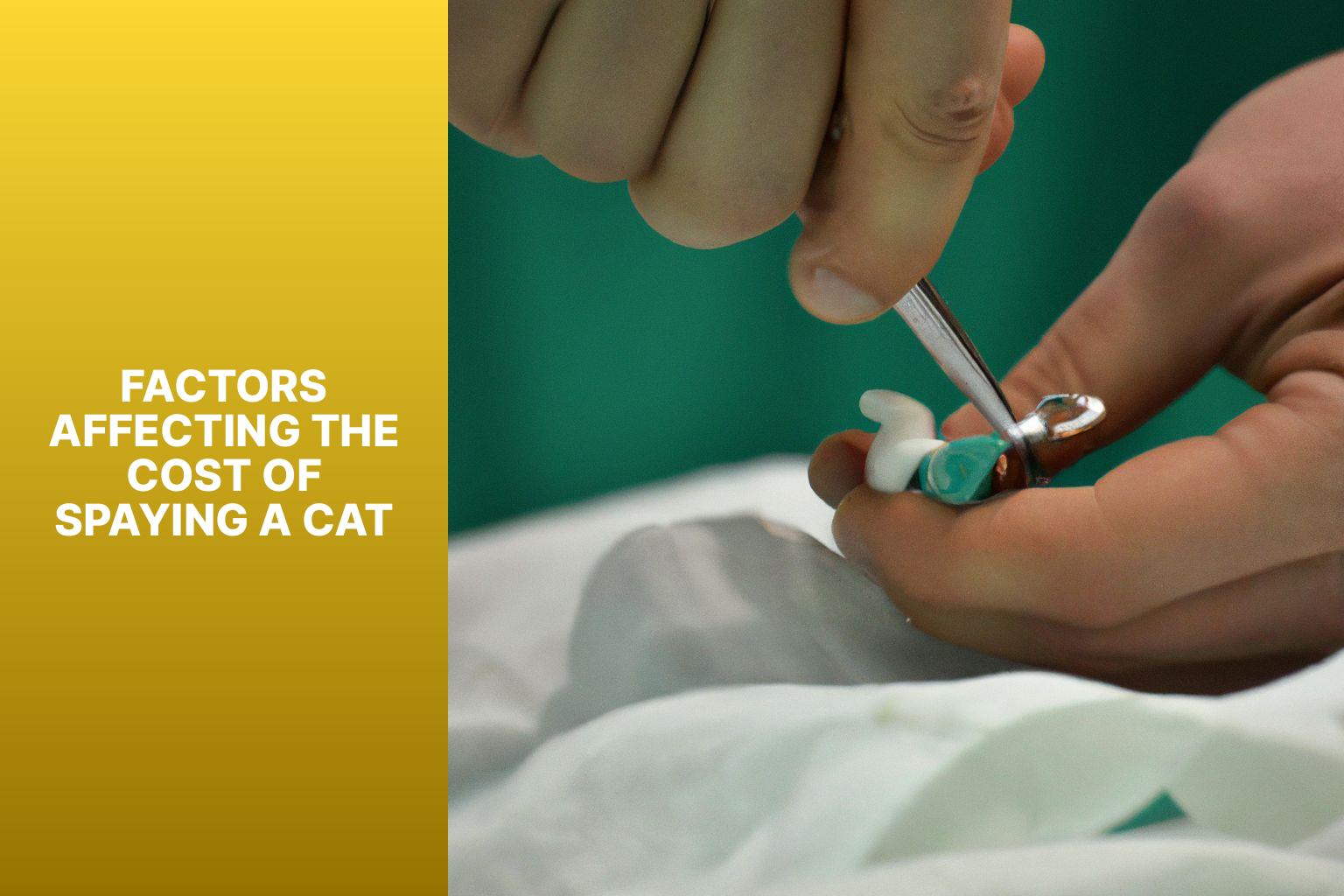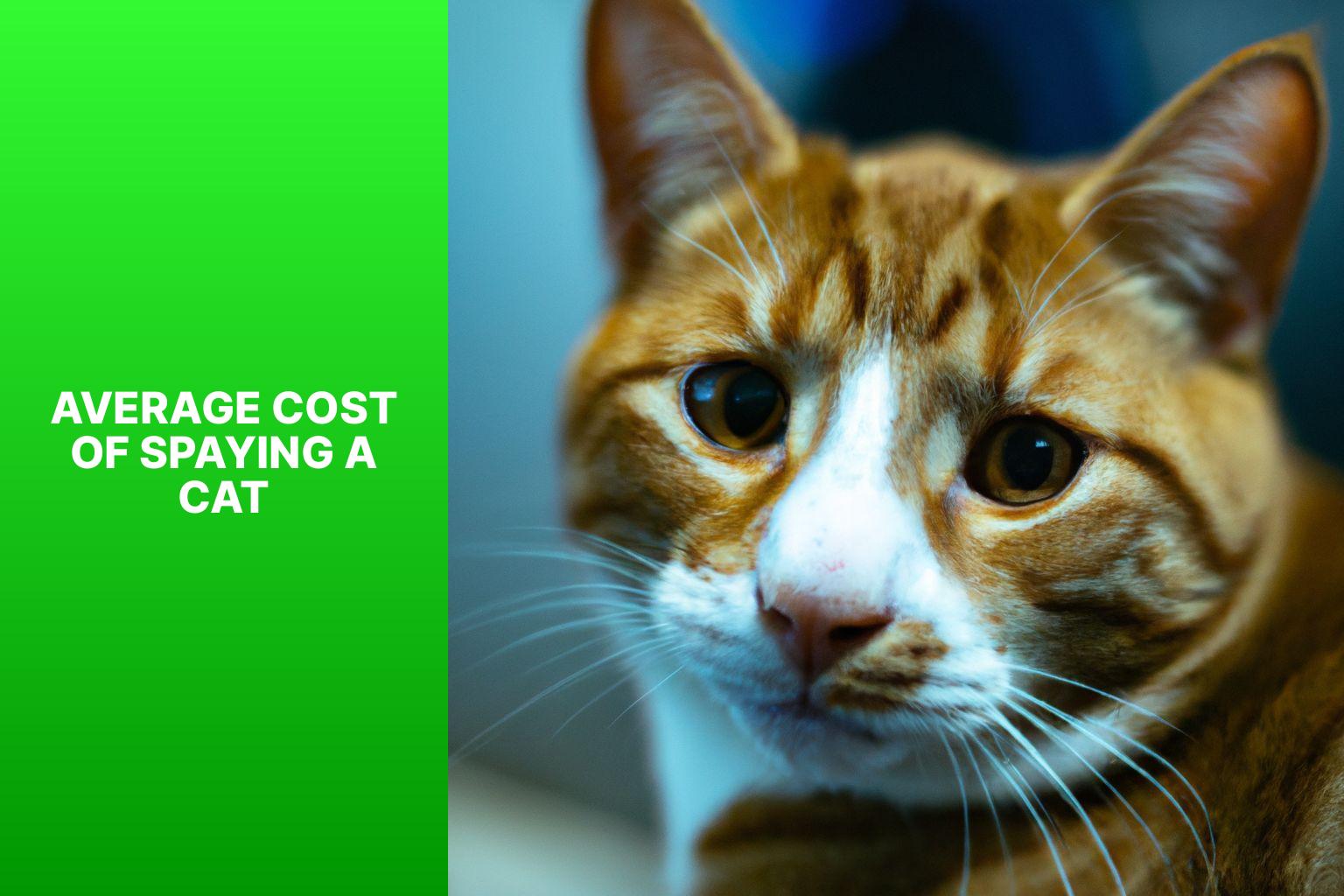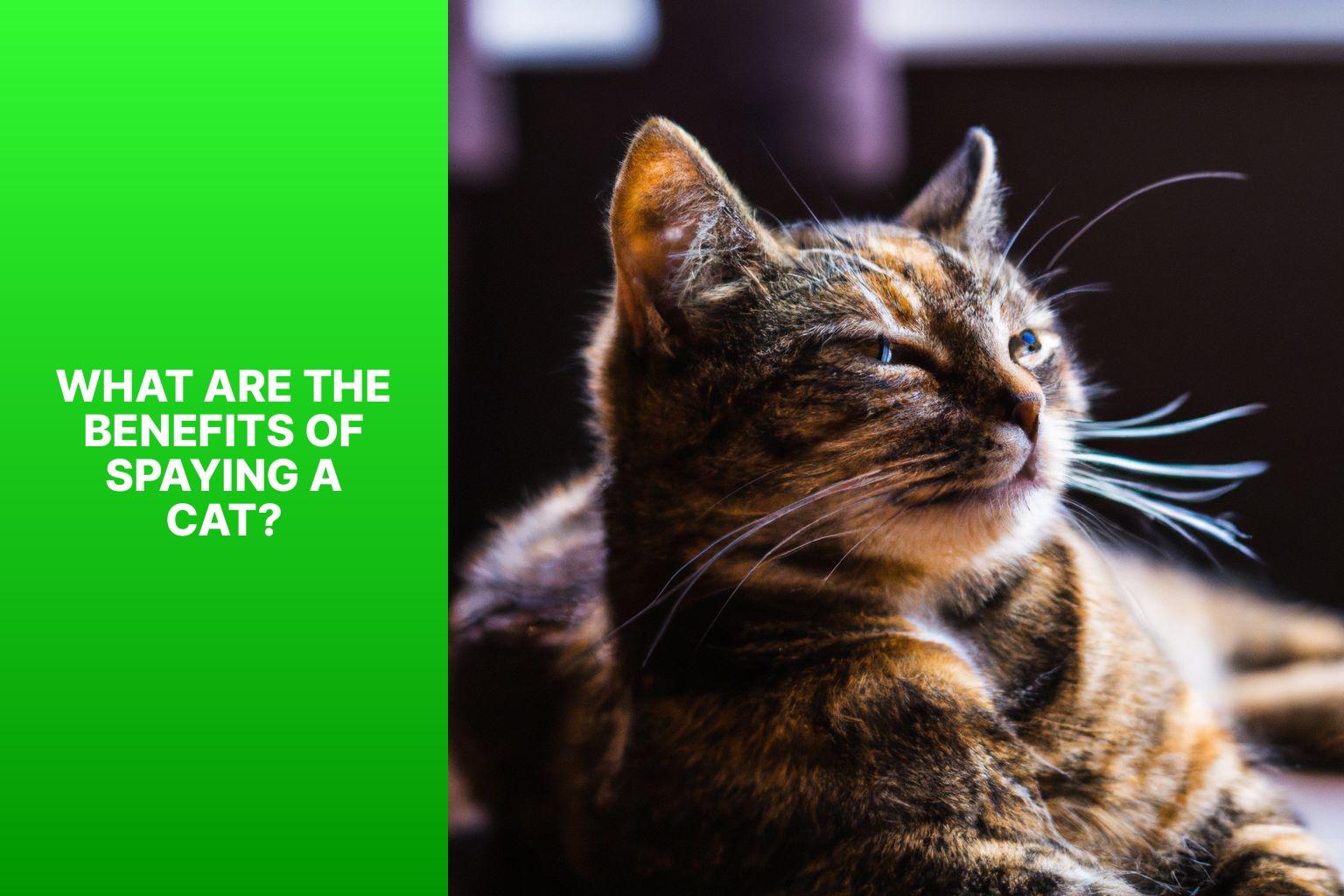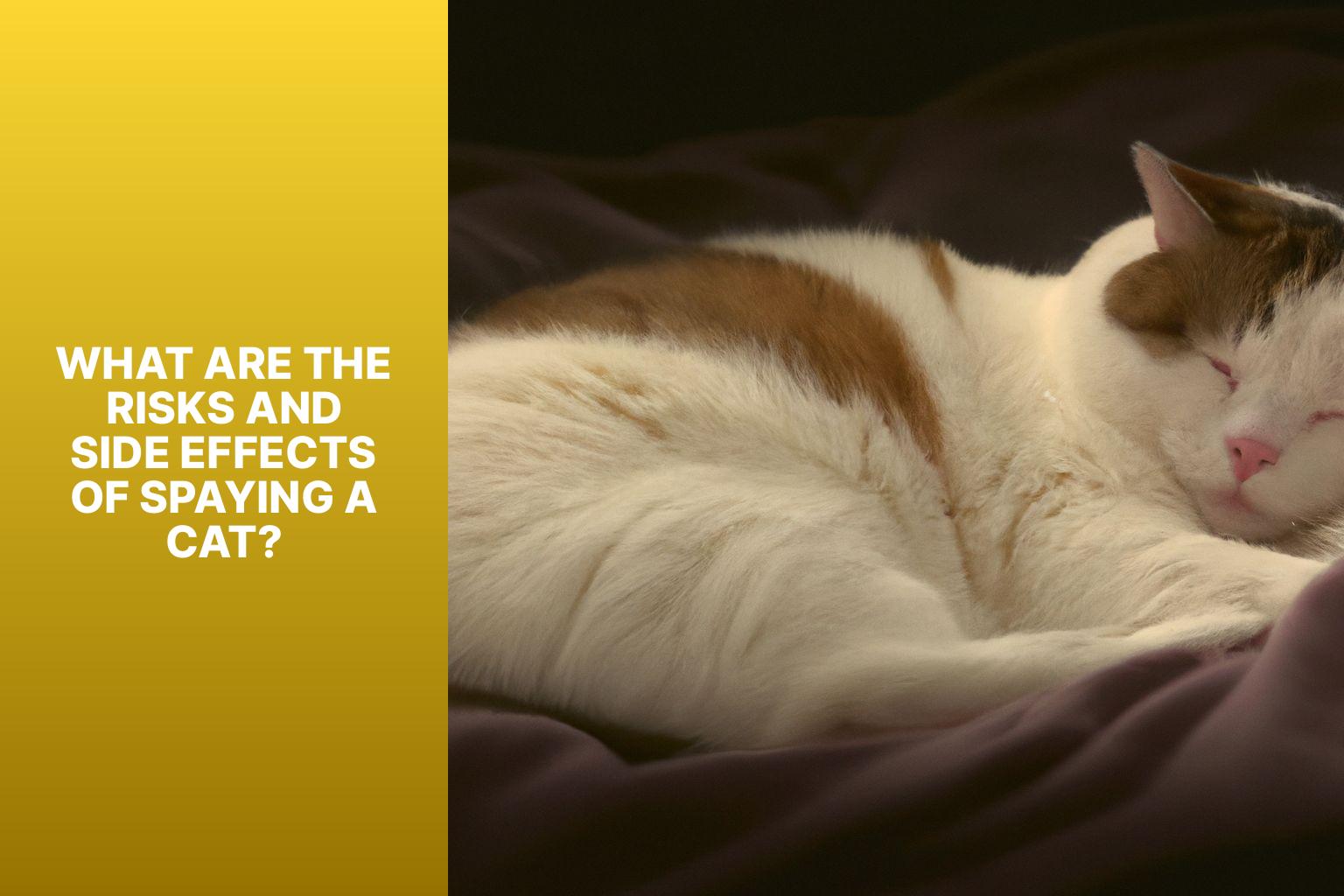nSpaying a cat, also known as ovariohysterectomy, is a surgical procedure performed to remove a female cat’s reproductive organs. This procedure is vital for several reasons, including population control, prevention of certain diseases, and behavioral benefits. It is important to understand the factors that affect the cost of spaying a cat and the average cost to make an informed decision.
Factors that influence the cost of spaying a cat include geographical location, veterinary clinic fees, the age and size of the cat, and any additional services required. The cost may vary depending on where you live and the clinic you choose.
The average cost of spaying a cat can range from $50 to $300, but prices may be higher in some areas. It is essential to consult with your local veterinary clinics to get accurate pricing information.
Fortunately, there are financial assistance programs available for spaying your cat. Many animal welfare organizations, rescue groups, and veterinary clinics offer low-cost or subsidized spaying services. These programs aim to make spaying more accessible and affordable for cat owners.
To find affordable spaying services for your cat, you can reach out to local animal shelters, animal welfare organizations, or participate in spay/neuter clinics organized by veterinary clinics or non-profit organizations. They often provide discounted spaying services and ensure proper care for your cat.
There are numerous benefits to spaying your cat, including preventing unwanted pregnancies, reducing the risk of certain reproductive diseases, eliminating the heat cycle, and minimizing disruptive behaviors like yowling and spraying.
Like any surgical procedure, spaying a cat carries certain risks and potential side effects. These include surgical complications, anesthesia-related risks, and temporary changes in behavior or appetite. It is crucial to discuss these risks with your veterinarian before the procedure.
By understanding the importance, cost, and available resources for spaying a cat, you can make an informed decision that ensures the well-being of your feline companion.
n###n
Spaying a cat, also known as ovariohysterectomy, is a surgical procedure performed to remove a female cat’s reproductive organs. This procedure is vital for several reasons, including population control, prevention of certain diseases, and behavioral benefits. It is important to understand the factors that affect the cost of spaying a cat and the average cost to make an informed decision.
Factors that influence the cost of spaying a cat include geographical location, veterinary clinic fees, the age and size of the cat, and any additional services required. The cost may vary depending on where you live and the clinic you choose.
The average cost of spaying a cat can range from $50 to $300, but prices may be higher in some areas. It is essential to consult with your local veterinary clinics to get accurate pricing information.
Fortunately, there are financial assistance programs available for spaying your cat. Many animal welfare organizations, rescue groups, and veterinary clinics offer low-cost or subsidized spaying services. These programs aim to make spaying more accessible and affordable for cat owners.
To find affordable spaying services for your cat, you can reach out to local animal shelters, animal welfare organizations, or participate in spay/neuter clinics organized by veterinary clinics or non-profit organizations. They often provide discounted spaying services and ensure proper care for your cat.
There are numerous benefits to spaying your cat, including preventing unwanted pregnancies, reducing the risk of certain reproductive diseases, eliminating the heat cycle, and minimizing disruptive behaviors like yowling and spraying.
Like any surgical procedure, spaying a cat carries certain risks and potential side effects. These include surgical complications, anesthesia-related risks, and temporary changes in behavior or appetite. It is crucial to discuss these risks with your veterinarian before the procedure.
By understanding the importance, cost, and available resources for spaying a cat, you can make an informed decision that ensures the well-being of your feline companion.
Key takeaway:
- Spaying a cat is important for various reasons: It helps control the cat population, reduces the risk of certain diseases, and eliminates the behavior associated with being in heat.
- The cost of spaying a cat can vary based on factors such as geographical location, veterinary clinic, age and size of the cat, and additional services required.
- There are financial assistance programs available to help with the cost of spaying a cat. It is recommended to research and inquire about such programs.
What is Spaying and Why is it important?
Spaying is a surgery used to remove the reproductive organs of female cats, including the ovaries and uterus. It is vital to understand what spaying is and why it is important.
First and foremost, spaying stops unwanted pregnancies. Female cats can have multiple litters each year, leading to an overpopulation of cats. By spaying cats, we can effectively control the cat population and decrease the number of homeless cats.
Spaying eliminates the risk of certain health problems. Female cats that are not spayed can develop uterine infections or even cancer in their reproductive organs. By undergoing spaying, these organs are removed, thus significantly reducing the chances of such diseases.
In addition to the health benefits, spaying can also have behavioral advantages. Female cats in heat can exhibit disruptive behaviors like yowling, spraying urine, and attracting male cats. Spaying eliminates heat cycles, making your cat more relaxed and less likely to engage in these behaviors, creating a harmonious home environment.
Spaying can help prevent certain types of cancer, such as mammary gland tumors. When cats are spayed before their first heat cycle, the risk of developing mammary gland tumors decreases significantly, contributing to their overall well-being.
Factors Affecting the Cost of Spaying a Cat
Photo Credits: Www.Catcornerblog.Com by Ethan Lewis
When it comes to the cost of spaying a cat, there are several factors that can influence the final price. From the geographical location to the veterinary clinic you choose, and even the age and size of your feline companion, these elements can all play a role in determining the cost. There may be certain additional services that can impact the overall expense. So, let’s delve into each of these factors, uncovering what you need to know about the cost of spaying a cat.
Geographical Location
Below is a table showing the cost of spaying a cat based on location:
| Geographical Location | Range of Cost | Average Cost |
|---|---|---|
| Rural Areas | $50 – $150 | $100 |
| Suburban Areas | $100 – $250 | $175 |
| Urban Areas | $200 – $400 | $300 |
The cost of spaying a cat varies based on location. In rural areas, the average cost is around $100. In suburban areas, the average cost increases to around $175. In urban areas, the average cost can be as high as $300.
Note that these are approximate costs and may vary depending on factors such as the veterinary clinic, cat’s age and size, and additional services required. Consult with your local veterinarian for accurate pricing.
Veterinary Clinic
When considering the cost of spaying a cat, the veterinary clinic you choose can impact the overall expense. Factors to consider when evaluating veterinary clinics for spaying services include:
- Expertise and reputation: Look for a veterinary clinic with experienced veterinarians who specialize in spaying procedures. A clinic with a good reputation for successful surgeries and animal care is desirable.
- Location: The geographical location of the veterinary clinic can influence the cost. Prices may vary depending on the area, with urban veterinary clinics typically charging higher fees.
- Facilities and equipment: A well-equipped veterinary clinic may charge higher prices due to the quality of care provided. They may have advanced surgical equipment, anesthesia monitoring systems, and cat-friendly recovery rooms.
- Additional services: Some veterinary clinics may include extras like pre-surgical exams, pain medications, or post-operative check-ups. These can increase the overall cost.
- Payment options: Consider if the veterinary clinic offers financing or payment plans. Some clinics may also accept pet insurance, which can cover a portion of the expenses.
Research and compare different veterinary clinics in your area to find one that fits your budget and provides high-quality care for your cat during the spaying procedure.
Age and Size of the Cat
The cost of spaying a cat can vary based on the age and size of the cat. Considering the age and size of your cat is crucial when estimating the cost of the spaying procedure. Consulting with your veterinarian will provide you with an accurate estimate.
Here is a table that outlines how these factors, age and size, influence the cost:
| Age of the Cat | Size of the Cat | Average Cost Range |
|---|---|---|
| Up to 6 months | Kitten | $50 – $150 |
| 6 months to 1 year | Small to Medium | $100 – $200 |
| 1 year to 5 years | Medium to Large | $150 – $300 |
| 5 years and older | Large to Extra Large | $200 – $400 |
Please note that these cost ranges are approximate and may vary depending on the veterinary clinic and location. Additional services, such as pre-surgical bloodwork or pain medication, as well as the cat’s overall health, can also impact the cost.
Spaying your cat offers several benefits, such as preventing unwanted pregnancies, reducing the risk of certain health issues, and promoting a longer and healthier life for your furry friend.
Additional Services
When it comes to spaying a cat, veterinary clinics may offer additional services based on your cat’s specific needs. These additional services can vary and may include:
- Pre-surgical examination: The veterinarian will perform a thorough examination to ensure your cat’s health and readiness for surgery. These additional services are essential for a successful procedure.
- Anesthesia: Most spaying procedures require general anesthesia to keep your cat comfortable and pain-free. The administration of anesthesia is one of the important additional services provided during the surgery.
- Monitoring: Vital signs, like heart rate and breathing, will be closely monitored during surgery for your cat’s safety. This monitoring is part of the additional services offered by the veterinary clinic.
- Pain management: After surgery, your cat may receive pain medication to alleviate any discomfort during recovery. This pain management is another important additional service provided to ensure your cat’s comfort.
- Post-surgical care: The veterinary clinic will provide instructions on wound care, activity restrictions, and follow-up appointments. These post-surgical care instructions are part of the additional services provided by the clinic.
It’s important to discuss these additional services with the veterinarian and understand associated costs. Some clinics may include them as part of a package, while others charge separately for each service.
If you’re looking for affordable spaying services for your cat, consider options like low-cost clinics, animal welfare organizations, or spay/neuter programs in your area. These resources often offer discounted or subsidized spaying services to make it more accessible for pet owners.
Average Cost of Spaying a Cat
Photo Credits: Www.Catcornerblog.Com by Alexander Mitchell
The average cost of spaying a cat can vary depending on several factors, such as the location, veterinary clinic, and additional services required. Typically, the basic spay surgery for a cat can range from $50 to $200, encompassing the surgery itself, anesthesia, and post-operative care.
Some veterinary clinics may offer supplementary services like pain medication, microchipping, or vaccinations, which can increase the overall cost by an additional $50 to $100. The geographical location plays a significant role in determining the cost of spaying a cat. Generally, urban areas and regions with a higher cost of living tend to have higher veterinary fees. Therefore, it is expected that the prices would be higher in metropolitan areas as compared to rural ones.
There are specialized clinics that specifically focus on spay and neuter procedures. These clinics may offer lower-cost options, typically ranging from $35 to $100. It is important to note that additional services like microchipping or vaccinations may not be provided at these clinics.
In certain cases, financial assistance is available for individuals who may require it. Animal welfare organizations or low-income assistance programs may offer discounted or even free spay or neuter services for cats. To obtain accurate pricing information and to inquire about financial assistance programs, it is advisable to contact local veterinary clinics or animal welfare organizations.
Are There any Financial Assistance Programs for Spaying a Cat?
Are There any Financial Assistance Programs for Spaying a Cat?
There are financial assistance programs available for spaying a cat. Animal welfare organizations offer low-cost or subsidized spay/neuter services to pet owners in need. These programs are designed to reduce stray cats and improve the overall health and well-being of cats in the community.
One great example of such a program is the ASPCA’s Spay/Neuter Alliance program. This program provides high-quality, low-cost spay/neuter services to pet owners who have limited income. Another option to consider is the Humane Society’s Spay/Neuter Fund, which offers financial assistance to individuals who are unable to afford the full cost of spaying their cat.
In addition to these organizations, local animal shelters and rescue groups also have their own spay/neuter assistance programs in place. These programs offer vouchers or discounted services to help pet owners cover the cost of spaying their cats.
To learn more about the specific financial assistance programs offered by these organizations, it is best to contact them directly. Eligibility criteria and available funding may vary from one organization to another. By taking advantage of these programs, cat owners can ensure that their pets are spayed at an affordable cost, promoting responsible pet ownership and contributing to the reduction of the stray cat population in their community.
How Can I Find Affordable Spaying Services for My Cat?
When you are looking for affordable spaying services for your cat, it is important to consider these options. Start by checking with local animal shelters, as many of them offer low-cost spay/neuter services for cats. You can contact your nearest shelter to inquire about prices and availability. Non-profit organizations are also a great resource, as some of them provide discounted or even free spaying services for cats. Take the time to search for these organizations in your area and reach out to them for assistance.
Additionally, veterinary clinics are known to offer discounted spaying services as part of their community outreach programs. You can contact different clinics in your area and compare prices to find the most affordable option. Another option to explore is spay/neuter clinics, which are specialized facilities that focus solely on spaying and neutering. These clinics are often able to provide cost-effective options for cat owners.
It’s important to note that prices for spaying services can vary depending on your location and the specific clinic or organization you choose. Factors such as your cat’s age, weight, and overall health may also affect the final cost. To find the most affordable option, it is recommended to contact multiple sources and inquire about pricing, as well as any available discounts or subsidies.
Always remember that spaying your cat is crucial for preventing unwanted litters and promoting their overall well-being. It can also reduce the risk of certain health issues and contribute to a longer, healthier life for your feline friend, as stated by the American Society for the Prevention of Cruelty to Animals (ASPCA).
What Are the Benefits of Spaying a Cat?
Photo Credits: Www.Catcornerblog.Com by Bobby Martin
Spaying a cat provides numerous benefits for both the cat and the owner.
So, what are the benefits of spaying a cat?
Spaying helps prevent unwanted litters, thereby reducing the population of stray and feral cats.
Unspayed female cats can have multiple litters in a year, resulting in a large number of kittens within a short span of time.
By opting for spaying, you actively contribute to controlling overpopulation and promoting a healthier cat community.
Spaying eliminates the risk of various health issues in female cats.
It effectively prevents uterine infections and significantly reduces the likelihood of cancerous mammary tumors.
This procedure also puts an end to the heat cycle in female cats, preventing distressing behaviors such as incessant yowling and spraying.
Another benefit of spaying is its positive impact on cat behavior.
It helps in reducing aggressive behaviors like fighting and territorial marking.
Spayed cats become more focused on their home environment and are less likely to roam or engage in risky behaviors.
By opting for this procedure, you not only prevent the birth of unwanted kittens but also safeguard your cat’s health and improve their overall behavior.
What Are the Risks and Side Effects of Spaying a Cat?
Photo Credits: Www.Catcornerblog.Com by Bruce Wilson
Spaying a cat helps control the pet population and prevent health issues. When considering the risks and side effects of spaying a cat, it’s important to be aware of a few key points.
1. Anesthesia Risks: Like any surgical procedure, there is always a small risk of complications related to anesthesia. This is why it’s crucial to have an experienced veterinarian who can carefully monitor your cat throughout the process.
2. Surgical Complications: While complications are rare, they can still occur. These may include bleeding, infection, or reactions to sutures. It’s important to closely monitor the incision site for any signs of redness, swelling, or discharge.
3. Hormonal Changes: One of the positive effects of spaying is that it eliminates the heat cycle in female cats, which not only prevents unplanned pregnancies but also reduces the risk of certain diseases. It’s worth noting that spaying can also influence a cat’s metabolism and potentially increase the risk of obesity. This is something to keep an eye on and manage through proper diet and exercise.
4. Urinary Problems: Another aspect to consider is that spaying slightly increases the risk of urinary issues. Regular monitoring and ensuring your cat stays well-hydrated can help mitigate these risks.
5. Longer-Term Health Benefits: On the flip side, spaying significantly reduces the risk of infections and certain types of cancer. This is an important factor to consider when discussing the procedure with your veterinarian.
Remember, it’s always best to consult with a veterinarian to assess the individual risks associated with your cat. Each cat is unique, and factors such as overall health and age should be taken into consideration.
In a historical context, the risks and side effects of spaying a cat have been extensively documented. Thanks to advancements in veterinary medicine, including improved techniques, anesthesia protocols, and overall care, the risks associated with spaying have significantly decreased. As a result, spaying has become a safer and more routine procedure. Despite the potential risks, the long-term benefits of spaying far outweigh the minimal risks involved. So, when considering spaying your cat, rest assured that with proper veterinary care, you are making a responsible choice for their overall well-being.
Some Facts About How Much It Costs to Spay a Cat:
- ✅ The cost to spay a cat can range from $100 to $500, depending on the veterinarian or shelter. (Source: A-Z Animals)
- ✅ Spaying a cat is more expensive than neutering because it is a more complex surgical procedure. (Source: A-Z Animals)
- ✅ The best age to spay a cat is around five months old, but there is no age cutoff. (Source: A-Z Animals)
- ✅ Spaying a cat in heat can be more expensive due to additional surgery time. (Source: A-Z Animals)
- ✅ Spaying or neutering a cat is recommended to reduce the risk of certain health problems and prevent cat overpopulation. (Source: Lemonade)









